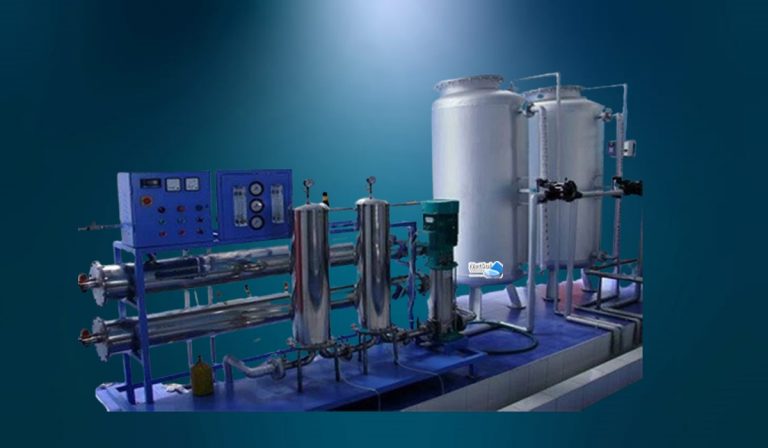
Reverse Osmosis
A semi-permeable membrane is used in the purification of water in reverse osmosis. In this process, osmotic pressure is overpowered by an applied pressure. Both commercial, industrial processes and the creation of drinkable water use reverse osmosis through a semi-permeable membrane to remove various sorts of molecules and ions from solutions. The most well-known application of reverse osmosis is the removal of viruses and other heavy metals such as metal ions, lead, arsenic, fluoride, radium, sulphate, magnesium, potassium, nitrate and phosphorus from water that has been contaminated.
How does reverse osmosis (RO) work?
Reverse osmosis functions by using a high pressure pump to raise the pressure on the salt side of the RO and force the water across the semi-permeable RO membrane, leaving nearly all of the dissolved salts (between 95% and 99%), behind in the reject stream. The feed waters’ salt content determines how much pressure is needed.
Reject (Concentrate) and Permeate (Product water)
Permeate (or product) water is the de-mineralized or de-ionized desalinated water. The reject (or concentrate) stream is the water flow that contains the concentrated pollutants that were not removed by the RO membrane.
Contaminants removed by Commercial RO Plants
Up to 99% of all pollutants and impurities, including total dissolved solids, chemicals, bacteria and viruses, are successfully removed from drinking water by reverse osmosis membranes because of their small pores (less than 0.0001 micron). It also uses pre-treatment methods to remove colour, odour, taste or other sediments followed by UV. Commercial RO Plants are also particularly effective at eliminating bacteria, viruses and protozoa.
Impurities are eliminated by reverse osmosis using two different processes:
1: One is based on ions’ electrical charge, which makes them resistant to passage. Ionic contaminants are eliminated by this technique. If a molecule has an ionic charge, even the smallest molecules are rejected. The removal effectiveness of this method is between 96 and 99%, although it also relies on the specific membrane and ionic charge.
2: The ultrafiltration effect, which is based on the microscopic pores of the reverse osmosis membranes acting as molecular filters, is the other method of impurity removal. The molecular threshold lies between 14 and 20 nanometres. Any contaminant with a molecular size that is greater than the cut-off point will be virtually entirely rejected. Any contaminant with a molecular weight below the cut-off threshold will almost entirely pass through. Few organic molecules are smaller than 14–20 nanometres in size including methanol, formaldehyde, formic acid and ethanol.
3: Many gases, including carbon dioxide, hydrogen sulphide, methane and ethane that are not ionised (charged) and also have relatively low molecular weight will pass via reverse osmosis because the RO membrane rejects pollutants based on their size and charge. A well-functioning Commercial RO Plant will probably reject any contamination with a molecular weight greater than 200.
Contact one of our experts to learn more about the working of Commercial RO Plants! Call us at +91-9650608473 or send an email to enquiry@netsolwater.com for product-purchase related information.
